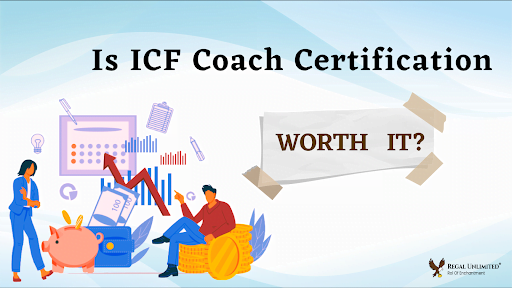Business excellence as studied in my MBA had two critical elements, organizational performance, and organizational climate. While many leaders focus on performance, the research indicates that it is the Organizational Climate that catalyzes performance. Hence, Business Excellence, or BE as we commonly called it, is achieved when organizations look at every employee as an invaluable human resource. Professional coaching enables employees in leading themselves, teams, and organizations towards purposefully achieving sustainable growth.
As part of the ICF Coaching Conclave, we got an opportunity to listen to some of the best leaders in the Industry. One such session that caught my attention was a Power talk by – Nitin Paranjpe, Chief Operating Officer, Unilever, and business coach – Myles Downey, who shared their valuable insights on how coaching can improve employees’ potential and leadership can be maximized in transforming and achieving business excellence.
Company, Brand, and the Purpose:
Mr. Nitin has been associated with HUL for over three decades. The philosophy, belief, and purpose of the organization play a pivotal role in the retention of employees in any organization. In my MBA case studies, HUL was just an FMCG company with strong distribution and socially compelling campaigns, but as I heard Nitin Ji speak passionately, I realized that the vision and the purpose of HUL as an organization are much larger. In Nitin’s words, organizations like HUL’s purpose is to create a sustainable common living space and the ambition is to demonstrate that sustainable business and high-performing business aren’t contradictory, they go hand in hand.
Mr. Nitin expounded on the three crucial beliefs at HUL to pursue the aforesaid statement. First,
“The company with purpose lasts”
“Brands with purpose will grow”
“People with purpose thrive”
He mentioned that the employees are made to identify their purpose and understand what adds meaning to their lives by curative programs.
Manager vs Entrepreneur
A famous quote of Mark Twain says, “The two most important days in your life are the day you are born and the day you find out why”. When work in life has a meaning, magical things happen. Millennials and Gen Z are increasingly looking for meaningful work at the workplace as well. Hence, looking for entrepreneurial opportunities to contribute.
With the word Entrepreneur, I recollect another remarkable insight from the session. Dr. C K Prahlad, an eminent professor explained the difference between Manager and Entrepreneur to Mr. Nitin and his classmates. He said the only difference between a manager and an entrepreneur is the relationship between Aspiration/Ambition and Resource.
“A managerial mindset is where ambition is equal to the resource. If the resources are increased, their work increases and vice versa. Whereas, an entrepreneur does not correlate both. They work for the best regardless of the availability of resources, such that the inequality converts itself into equality and that’s the only way innovations happen”.
“Wow”, I exclaimed at the clarity of the definition of the term ‘Entrepreneurial Mindset.’ This was an eye-opener for us, especially for entrepreneurial companies who are looking to run big. How can we inculcate and nurture the entrepreneurial mindset in us and amongst our employees is a big question. Are you still operating from a Managerial Mindset? This left me reflecting!!!
Crucial Human Insights
I recollect my prof telling us in one session, that managing business is actually managing Wo/Men. Understand the wo/man behind the wheel and the journey is taken care of, he advised us. A similar thread was shared by Mr. Nitin as he explained the three crucial human insights that need to be present always for magical outcomes.
- The first insight is that all people seek meaning and purpose in their life. Therefore, businesses need to create organizational visions which are collectively inspiring and individually relatable.
- The second insight is that all people want to do heroic tasks. The businesses must have goals, the process of achieving which must excite the employees and offer a chance to do heroic tasks.
- Third, to create a safe space, a space where everyone is comfortable, which is based on trust and the employees know that they have the back of their boss, where they can have the courage to dream and pursue the dream.
Let’s pause and reflect, how many of our organizations provide the aforesaid three things, how many leaders are even aware of these crucial human insights? While we chase targets and strict deadlines, we need to understand that the bottom line is “we are leading human beings.” Coaching puts the focus back on the “Being”
Myles Downey: Essence of Coaching

Myles Downey is an acknowledged authority on performance, coaching, and leadership. He has authored three classics: Effective Modern Coaching, Effective Coaching, and Enabling Genius. He is a leading business performance coach in Europe. He established The School of Coaching in 1996. His focus in the field of coaching revolves around Leader Performance, helping people achieve results. Simply put in Mr. Myles’s words, “I like to win and I like to help other people win”.
Many times we are asked how Coaching fits in the Organization. Though there are many answers available, I find Myles’ stance intriguing. Mr. Myles feels coaches do not need to go around employees coaching them all the time. Instead, a simple conversation between a manager and his subordinate on how the person would approach a task, how he would solve a problem is Coaching. This is how coaching fits in the organization. Recollecting his master, Timothy Gallwey, the author of “The Inner Game of Tennis”; he said that his entry point into coaching was when he read this book. He was fascinated by philosophy and the way it was written.

The Inner Game of Tennis is a phenomenal read and every aspiring – professional coach must take it up to read and absorb the learnings from this book.
Lead – Manage – Coach
Lead, Manage and Coach are the three critical elements of managerial skill. Coach stands at the core of the circle, Manage forms the outer band for Coach and Lead is the bigger circle that encompasses these.
One key takeaway from Myles talk for me was the tri-circle model of Lead-Manage-Coach. He says, “Lead is about ‘Why’, Manage is about ‘What’ and Coach is about ‘How’.” As a leader, one has to make the team understand the “Why of the organization” – the purpose, the vision, and the context in which the organization operates.
This is the first level of alignment of the participants with what’s happening in the organization.
The second level talks about “What of the organization” – the leader has to decide upon what quality and quantity of performance they would look forward to; the goals, the tasks, and the projects. The employees need to understand the connection between what they are doing with why it is important.
The final stage makes greater sense when the first two are understood well. The coaching domain is slightly different. It completely depends on how an individual does it. While coaching a person, the thought process which first rests with the coach has to shift to the person being coached.
The authority pertaining to Lead and Manage rests with the organization and the authority of Coaching rests with the individual self. When authority is left with someone, they do it their way, with passion, excitement, they do it with responsibility and accountability. When they fall short in their progress, they do not ask for help to solve it for them; but tend to think for themselves. When the organizations align the command and control to the vision, mission of the organization and enable the employees to use the authority, business excellence can be achieved throughout the organization.
Set Goals from the Heart
I was talking to my MBA mates, those who work in famous MNCs, in coveted roles like consulting, advisory, marketing associates, etc. In one such conversation, I asked him, “How’s your manager?” His reply kind of revealed a lot. He said, “Bro, they all are very good people, but once the targets come. They CHANGE. Yes, but the targets before they and managers CHANGE.”

We know organizations are number-driven. Goals and Targets are often discussed in the meetings. Speeches are given to stretch and scale the targets, achieve the goals, etc. But Mr. Nitin on answering a query added, “Set goals from the heart and use the intellect of mind to find ways to achieve them”. A person must judge depending on his credibility while setting audacious goals. I think leaders have to take cognizance of the fact that merely driving numbers dries the spirit of the organizational purpose. Goals must be audacious, must stretch the individual/team potential, but should they be driven humanely? Let’s reflect!!! (Too much to reflect, isn’t it)
During my coaching journey, I have always wondered, can a coach wear multiple hats at the same time. Mr. Nitin answered this query of mine, he believes that a person may be a coach, a leader, and a manager on different occasions. In such cases, wisdom and judgment play a crucial task in deciding what role to be taken on what occasions.
When asked in the Q&A on how to create a learning opportunity where the organizational culture doesn’t have the conduciveness to work and explore, Mr. Nitin replies it is a great opportunity if an organization can help do that. Even in the case of its absence, if a person is willing to learn and has such a mindset, any interaction that triggers thinking, is an opportunity to learn.
For me, it was an eye-opener. I understood how coaching is not an exclusive area away from the mundane work. It overlaps with different activities where one is involved at the workplace, helping in discovering the purpose and passion of an individual. Coaching can then be used to align the individual’s passion with the organizational vision and prompt the leaders to set Ambitious goals with heart.






